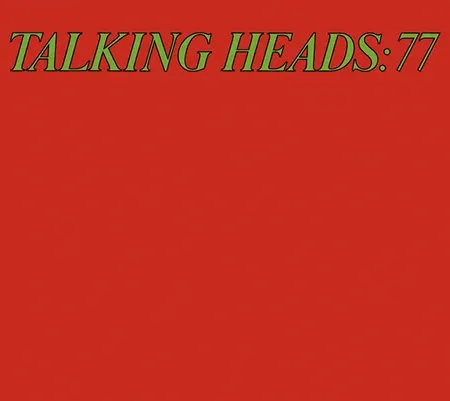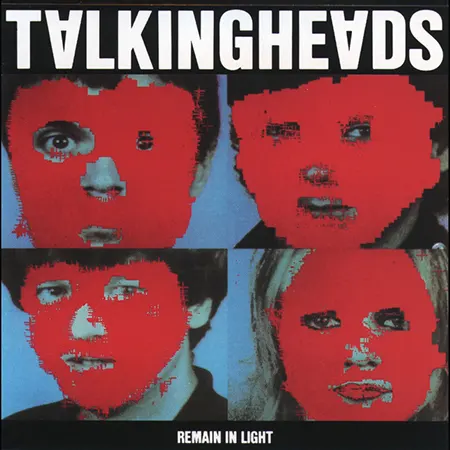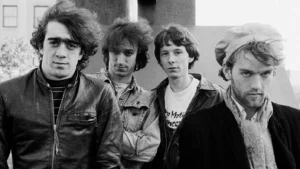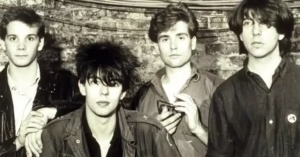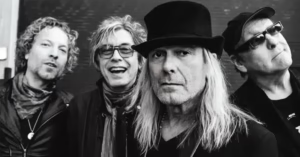Talking Heads: Pioneers of New Wave and Art Rock Innovation
Talking Heads. Formation and Early Years
Talking Heads was formed in 1975 in New York City by four art school friends: David Byrne (vocals, guitar), Tina Weymouth (bass), Chris Frantz (drums), and Jerry Harrison (keyboards, guitar). Emerging from the burgeoning punk and new wave scenes, the band quickly stood out with their unique blend of punk energy, art rock experimentation, and world music influences.

Talking Heads. Musical Style and Characteristics
Talking Heads are known for their:
- Quirky, cerebral lyrics often delivered with David Byrne’s distinctive vocal style
- Eclectic musical blend mixing punk, funk, pop, and world rhythms
- Innovative use of rhythm and texture, often incorporating African and Caribbean percussion
- Art school sensibility reflected in their creative visuals, stage performances, and album artwork
- Exploration of themes like alienation, modern life, and identity
Their sound helped define the new wave genre while pushing boundaries beyond conventional pop and rock.
Talking Heads. Key Albums and Career Highlights
Talking Heads: 77 (1977)
Their debut album featured raw, catchy songs like “Psycho Killer,” showcasing a minimalist yet intense approach that earned critical acclaim.
More Songs About Buildings and Food (1978)
Produced by Brian Eno, this album introduced funkier grooves and expanded their sonic palette with standout tracks like “Take Me to the River.”
Fear of Music (1979)
A darker, more experimental record with atmospheric textures and songs such as “Life During Wartime” and “I Zimbra,” blending avant-garde and danceable rhythms.
Remain in Light (1980)
Widely regarded as their masterpiece, this album combined African polyrhythms, funk, and electronic music, with hits like “Once in a Lifetime.” It is a landmark in art rock and world music fusion.
Speaking in Tongues (1983)
Featuring the hit “Burning Down the House,” this album balanced accessibility and innovation with danceable rhythms and quirky lyrics.
Little Creatures (1985)
A more pop-oriented album with catchy melodies and upbeat songs like “And She Was,” showcasing their evolving sound.
Naked (1988)
Incorporated global music influences with a more stripped-down production, closing their studio album legacy with an eclectic and worldly vibe.
Talking Heads. Legacy and Influence
- Talking Heads are credited with pioneering the new wave and post-punk movements.
- Their collaborations with producer Brian Eno elevated their sound to new experimental heights.
- The band’s integration of world music rhythms influenced countless artists across genres.
- David Byrne’s artful approach to performance and visuals helped redefine what a rock band could be.
- They were inducted into the Rock and Roll Hall of Fame in 2002.
- Their 1984 concert film Stop Making Sense is considered one of the greatest live concert films ever made.
Talking Heads. Interesting Facts
- David Byrne often incorporated visual art and performance art into Talking Heads’ shows.
- Tina Weymouth and Chris Frantz later formed the side project Tom Tom Club, known for the hit “Genius of Love.”
- The band’s innovative sound helped bridge the gap between punk, dance music, and art rock.
- Their music has been widely sampled and covered, attesting to their lasting cultural impact.
Select Discography
- Talking Heads: 77 (1977)
- More Songs About Buildings and Food (1978)
- Fear of Music (1979)
- Remain in Light (1980)
- Speaking in Tongues (1983)
- Little Creatures (1985)
- Naked (1988)
Talking Heads remain a cornerstone of alternative and art rock, celebrated for their fearless innovation, eclectic sound, and lasting influence on modern music.


